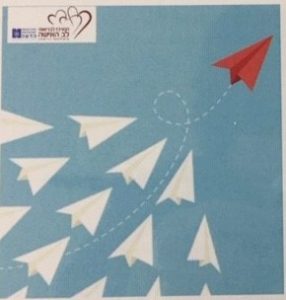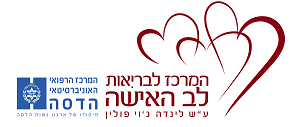Coaching For Change
 The Pollin Center’s health coaching group is an innovative intervention for enhancing self-care to reduce risk factors for heart disease.
The Pollin Center’s health coaching group is an innovative intervention for enhancing self-care to reduce risk factors for heart disease.
Through empowering participants to believe in themselves and in their ability to make difficult changes, the group’s leaders encourage participants to set and implement specific goals for improving their nutrition and increasing their exercise. Over the course of this eight-session intervention, a nutritionist, an exercise coach, and a psychologist each provide participants with relevant information on healthy living from their respective fields, as well as tools for managing challenges with regard to staying on track and meeting specific goals. In-group experiential exercises offer participants the opportunity to experiment with new techniques for changing old habits, allowing them to experience a sense of empowerment as they discovered ways to address barriers to self-care.a
empowering participants to believe in themselves and in their ability to make difficult changes, the group’s leaders encourage participants to set and implement specific goals for improving their nutrition and increasing their exercise. Over the course of this eight-session intervention, a nutritionist, an exercise coach, and a psychologist each provide participants with relevant information on healthy living from their respective fields, as well as tools for managing challenges with regard to staying on track and meeting specific goals. In-group experiential exercises offer participants the opportunity to experiment with new techniques for changing old habits, allowing them to experience a sense of empowerment as they discovered ways to address barriers to self-care.a
The emergence of the Corona pandemic and its resulting limitations on our ability to meet in-person posed an unprecedented challenge. No longer able to rely on the personal connection that develops in regular face-to-face meetings, our coaching group staff needed to think creatively about how to conduct our intervention over Zoom. The need to adjust our intervention for an online format necessitated some changes to our delivery. In particular, the inability to meet together in the same physical space compelled us to find creative ways to build community. a
We responded to this challenge in a number of ways, two of which were particularly helpful. First, we changed our original model which often involved having the group leader ask participants to respond in turn to a particular question. In our new model, the group leader encouraged the first participant who had responded to the leader’s question to then choose another participant and ask that participant the same question. In turn, the latter participant posed the question to another participant. This encouraged participants to interact with each other rather than focusing exclusively on the group leader. Second, we increasingly employed a Zoom feature called “Breakout Rooms.” This feature allowed us to divide participants into virtual “rooms” with groups of two to three. Participants then engaged in a particular exercise with their partners for several minutes before returning to the group. By making sure to pair participants with new partners for different exercises, we created opportunities for group participants to connect with each other despite the virtual platform. a
Happily, Israel appears to be emerging from the pandemic at this time. Although this process is expected to be gradual, we are hoping that face-to-face meetings will once again be realistic at some point. However, the opportunity to adjust our model for an online format has created new possibilities for reaching broader audiences, including participants who may be homebound or geographically distant. We feel optimistic that the option of an online format for our coaching group will expand its potential and impact, not only under pandemic conditions but in the post-Corona world as well.a
Search
Recent Posts
Abuse and Heart Disease
Abuse and Heart Disease: Exposure to trauma and...The Fake News Fiasco
We are exposed to a tremendous amount of inform...Coaching For Change
The Pollin Center’s health coaching group is an...When on-line is off limits: Innovative Corona-tailored health promotion program for Ultra-orthodox women – Chevruta L’Chaim
Ultra-Orthodox (Haredi) women have worse health...21444
The stress, apprehension and the fears coupled ...
